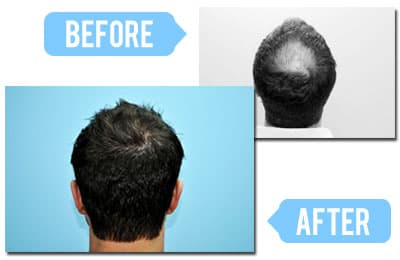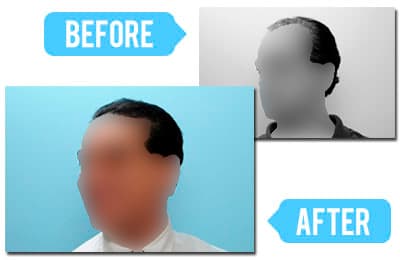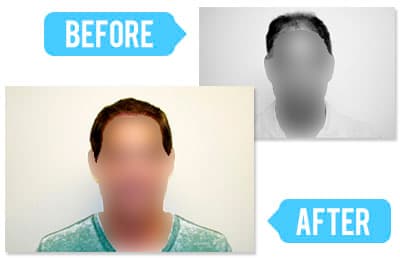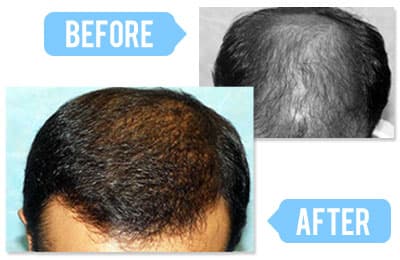Hair Transplants for Different Hair Types: Straight, Curly, and Wavy
Did you know your hair type can significantly impact the success of your hair transplant? From straight and sleek strands to voluminous curls, your hair texture is more than just a personal characteristic—it’s a key factor that determines how hair transplants are performed and the results you’ll achieve.
Hair transplants have come a long way, but they’re not one-size-fits-all solutions. The texture, curl pattern, and density of your hair can influence everything, from the choice of transplant technique to graft placement and overall coverage.
Here, we’ll explore how straight, curly, and wavy hair types impact hair transplant procedures, and share tips for achieving results so natural nobody will guess you’ve had one. Whether you’re a man or woman exploring options for hair restoration, this guide will inspire you to take the next step with confidence.
Why Hair Type Matters in Hair Transplants
When it comes to hair transplants, the texture and type of your hair can shape every aspect of the procedure. It’s something many people don’t initially consider, but experts know all too well how different hair types require unique strategies for grafting and placement.
Hair Texture and Graft Placement
Hair texture plays a significant role in determining how a surgeon handles the delicate work of graft placement. For example:
- Straight Hair: Requires exact placement for a natural look since the strands sit flat and offer less coverage per square inch.
- Curly Hair: Though more challenging to extract and implant due to the curvature of the follicles, curly hair offers the illusion of density and can make results appear fuller.
- Wavy Hair: A middle ground of texture and flexibility, wavy hair combines the challenges and benefits of straight and curly hair.
Ethnic Hair Considerations
Ethnic background often correlates with hair characteristics, which further impact hair transplant techniques:
- Afro-textured Hair: Tight curls and unique follicle shapes that require advanced skill to handle without damaging the grafts.
- Asian Hair: Straight, thick, and coarse hair that may create challenges in extraction but allows for significant coverage.
- Caucasian Hair: Highly varied, spanning straight, curly, and wavy textures, meaning techniques must be tailored based on individual hair type.
Now, let’s break it down further and examine how specific hair types—straight, curly, and wavy—affect transplant results.
Hair Transplants for Straight Hair
Characteristics of Straight Hair
Straight hair tends to be smooth, and sleek and lies flat against the scalp. While it’s easy to style and maintain, it can lack volume, which presents unique challenges during hair restoration.
Best Techniques for Straight Hair
For individuals with straight hair, surgeons often recommend:
- Follicular Unit Extraction (FUE): Enables precise placement to mimic the natural direction and angle of hair growth.
- Follicular Unit Transplantation (FUT): For those requiring multiple grafts, FUT can cover large areas efficiently.
Challenges and Results
Straight hair can make scars more visible if not handled meticulously. Additionally, incorrect angulation during implantation can make the results look unnatural. However, in the hands of an experienced surgeon, straight hair transplants deliver excellent results—smooth, seamless, and naturally integrated.
Hair Transplants for Curly Hair
Characteristics of Curly Hair
Curly hair is dense, and voluminous, and follows a spiral or coiled pattern. This natural texture hides any inconsistencies in hair density, making it an ideal candidate for high-impact results.
Best Techniques for Curly Hair
- FUE Technique: Often the go-to for curly hair because it minimizes scarring and works well with the natural curl pattern.
- FUT Technique: Though less common, FUT can be effective for clients whose curl pattern helps conceal any minor scarring.
Challenges and Results
Extracting curly hair grafts requires exceptional skill. The follicles themselves are curved, which makes them harder to remove intact. If mishandled, the risk of damaging the grafts increases. However, the payoff is substantial—curly hair’s density and texture create an illusion of fuller, thicker results.
Hair Transplants for Wavy Hair
Characteristics of Wavy Hair
Wavy hair is the perfect middle ground—offering volume like curly hair while retaining some of the smoothness and manageability of straight hair.
Best Techniques for Wavy Hair
- FUE and FUT: Both techniques work well for wavy hair, with the choice depending on individual needs. Wavy hair is quite adaptable in this regard.
Challenges and Results
One of the critical challenges is ensuring that the placement of grafts maintains the natural wave pattern. A misplaced follicle can disrupt the flow of the waves, undermining the overall effect. When performed correctly, wavy hair transplants result in naturally voluminous, textured results.
Hair Transplants for Different Ethnic Hair Types
Recognizing the correlation between hair texture and ethnicity is vital. Afro-textured, Asian, and Caucasian hair each comes with unique traits that necessitate specific approaches.
- Afro-textured Hair: Tight curls and high density require careful handling. FUE is often preferred. The results, however, are among the most natural due to the density.
- Asian Hair: Straight, coarse strands present extraction challenges but offer significant scalp coverage.
- Caucasian Hair: Has the most variation in texture, making FUE or FUT viable depending on the individual.
How Hair Texture Affects Hair Transplant Results
Here’s a look at how hair texture influences the outcomes of hair transplant results:
- Graft Survival Rates: Curly hair, while harder to extract, may have a slightly lower survival rate compared to straight and wavy hair.
- Density and Coverage: Curly hair requires fewer grafts to achieve a full appearance, while straight hair often demands more.
- Scarring: Curly hair hides scars better, whereas straight hair makes scars more noticeable if not performed expertly.
Choosing the Right Hair Transplant Method for Your Hair Type
When deciding between techniques, consider these factors:
- FUE: Best for curly and wavy hair since it involves minimal scarring and detail-oriented precision.
- FUT: Ideal for straight hair or individuals requiring a larger number of grafts for full coverage.
Consulting with a surgeon who has experience with your specific hair type is crucial. Discuss your goals and ask about their expertise in handling hair textures similar to yours.
Recovery and Aftercare Tips for Different Hair Types
Aftercare is key to ensuring successful results, and your hair texture influences how you care for your grafts:
- Straight Hair: Avoid harsh styling products and be gentle with brushing.
- Curly Hair: Moisturize well to prevent dryness, and avoid overly tight hairstyles.
- Wavy Hair: Use lightweight products that enhance natural waves and follow your surgeon’s aftercare advice.
Restoring Confidence, One Strand at a Time
With advancements in hair transplant techniques, there’s an ideal solution for everyone—regardless of hair type. The key is finding an experienced surgeon who understands the unique challenges and benefits of straight, curly, and wavy hair.
Looking to restore your hair? Schedule a free consultation today to discuss the best approach for your unique hair texture. Your next chapter of confidence starts here!
BOOK YOUR FREE
CONSULTATION
Enter your details and one of our specialists will be in touch with you
Or give us a call on
020 8902 2270
(tap to call from your mobile)
Our team has helped many clients explore hair restoration options — see real patient stories.
Our hair products are second to none, therefore we’re proud of the positive feedback from many clients over the years. See for yourself the dramatic transformations brought about by regular use of HGC products and treatment. (Individual outcomes vary, but many clients report noticeable improvements over time.)



